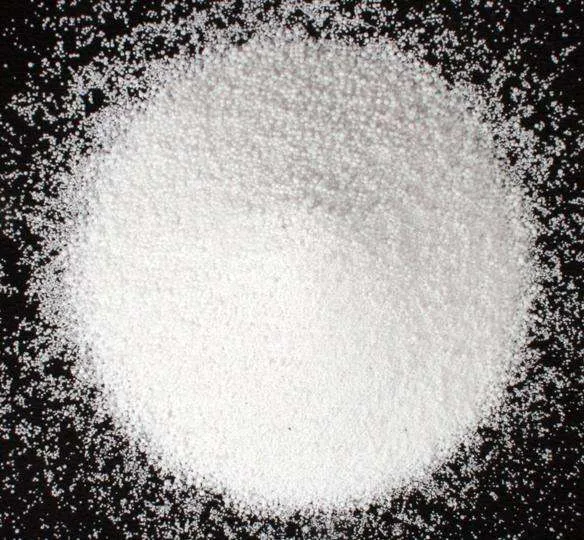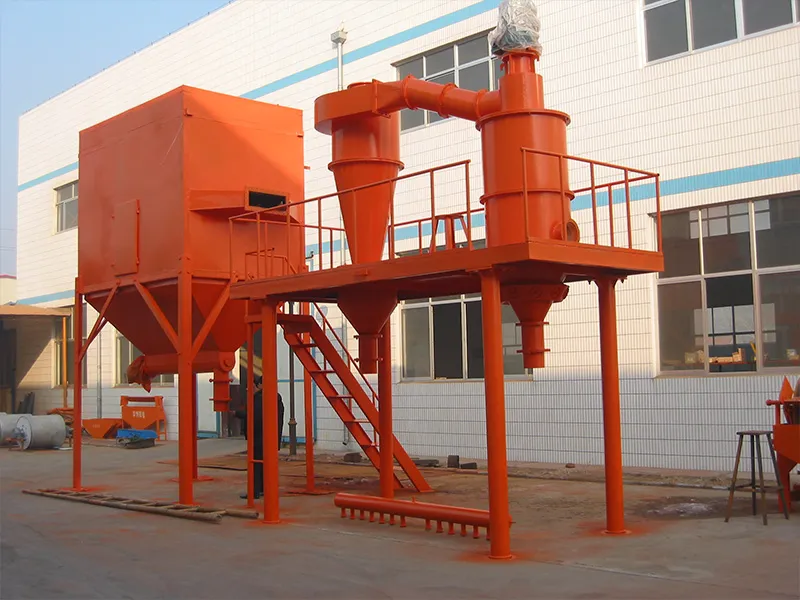Abstract
Aluminum oxide, as an important inorganic non-metallic material, its physical and chemical properties are closely related to the particle size distribution. This article describes the classification methods of alumina powder, including dry classification, wet classification, etc.; and explores the application status of classification technology in fields of lithium battery separators, ceramic materials, and catalyst support.

Introduction
Aluminum oxide is one of the most important oxide ceramic materials in industry. According to the crystal form, it can be divided into various forms such as α, γ, θ, etc. Different application fields have strict requirements for the particle size distribution of alumina powder. For example, the lithium battery separator coating requires narrow-distributed α-Al2O3 with d50=0.8±0.2 μm, while high-end ceramic substrates demand multi-graded alumina powder to achieve the best sintering performance.
Therefore, the classification of alumina has become a key means to regulate the performance of alumina powder. With the development of new materials industry, higher requirements have been put forward for alumina classification technology, which in turn promotes continuous innovation in classification equipment and processes.
Classification methods for alumina powder
Current classification methods for alumina powder:
— Dry classification
The turbo air classifier is currently the mainstream dry classification equipment. It utilizes the combined action of centrifugal force generated by the rotating classifying wheel and airflow to achieve precise classification.

Its typical structure includes:
Classifying wheel: The classifying wheel is made of hard materials, such as aluminum oxide, silicon carbide, and tungsten carbide, to withstand the impact of high-hardness aluminum oxide powder and extend its service life.
Secondary air system: Reduce the entrainment of coarse particles.
Vortex adjustment device: Optimizing flow field stability.
— Wet classification
For the classification of sub-micron alumina powder, the wet classification has more advantages. It is a process of classification based on the fact that alumina particles exhibit different behaviors in a liquid medium due to their own properties such as particle size, density, etc.
The typical configuration of the hydrocyclone group is:
The first-stage hydrocyclone: Φ50mm, removing particles with d > 5μm.
The second-stage hydrocyclone: Φ25mm, separating particles in the range of 1-5μm.
The third-stage hydrocyclone: Φ10mm, collecting ultra-fine powders with d < 1μm.
— Electrostatic classification
Electrostatic classification utilizes the difference in dielectric constants between alumina and impurity particles (for α – Al₂O₃, εᵣ = 9.3) to achieve separation in a high – voltage electric field of 10 – 50 kV. It is particularly suitable for:
· Removal of Conductive Impurities (e.g., Fe₂O₃)
· Separate alumina with different crystal forms (γ-Al₂O₃ and α-Al₂O₃)
Application of aluminium powder after classification
Refractory materials: Alumina with different particle sizes can be used to manufacture refractory materials with different properties. Coarse-grained alumina powder can increase the strength and thermal shock resistance of refractory materials, while fine-grained alumina powder helps to improve the compactness and erosion resistance of refractory materials.
Ceramics: When used in ceramic production, the classified alumina can control the sintering shrinkage, density, and mechanical properties of ceramics. Fine-grained alumina can be used to prepare high-performance fine ceramics, such as ceramic cutting tools and ceramic substrates.
Abrasives: Coarse-grained alumina can be used as an abrasive in grinding tools such as grinding wheels and sandpapers, and is applied to the grinding and polishing processes in industries like metal processing and stone processing.
Catalyst carriers: The finely classified alumina has a suitable pore size distribution and specific surface area, and can be used as a catalyst carrier, which is widely applied in catalytic reactions in fields such as petrochemical industry and environmental protection.
Conclusion
With the development of industries, such as new energy and electronic ceramics, higher requirements have been put forward for classification technology. In the future, interdisciplinary integration of materials science, fluid mechanics, and automation technology seems to be a must to drive the alumina classification technology towards a more efficient and accurate direction.


Qingdao Epic Powder Machinery Co., Ltd. is a professional manufacturer of powder processing equipment with many years of production experience and technical accumulation. Our products include: powder grinding equipment, classifying equipment, modification equipment and related auxiliary equipment. Air classifier is our main classification equipment, designed by our engineers under the guidance of our German consultant. It includes 5 types: HTS, ITC, CTC, MBS and TDC. They have excellent performance, competitive price, and are widely praised by consumers.
If you need an air classifier to classify alumina powder or other materials, or if you require other powder processing equipment, please contact Epic Powder. We will provide a one-stop solution that covers equipment selection, solution design, installation and commissioning, as well as after-sales service.

Contact Epic Powder, and let our professional equipment make your powder processing more efficient and intelligent!

